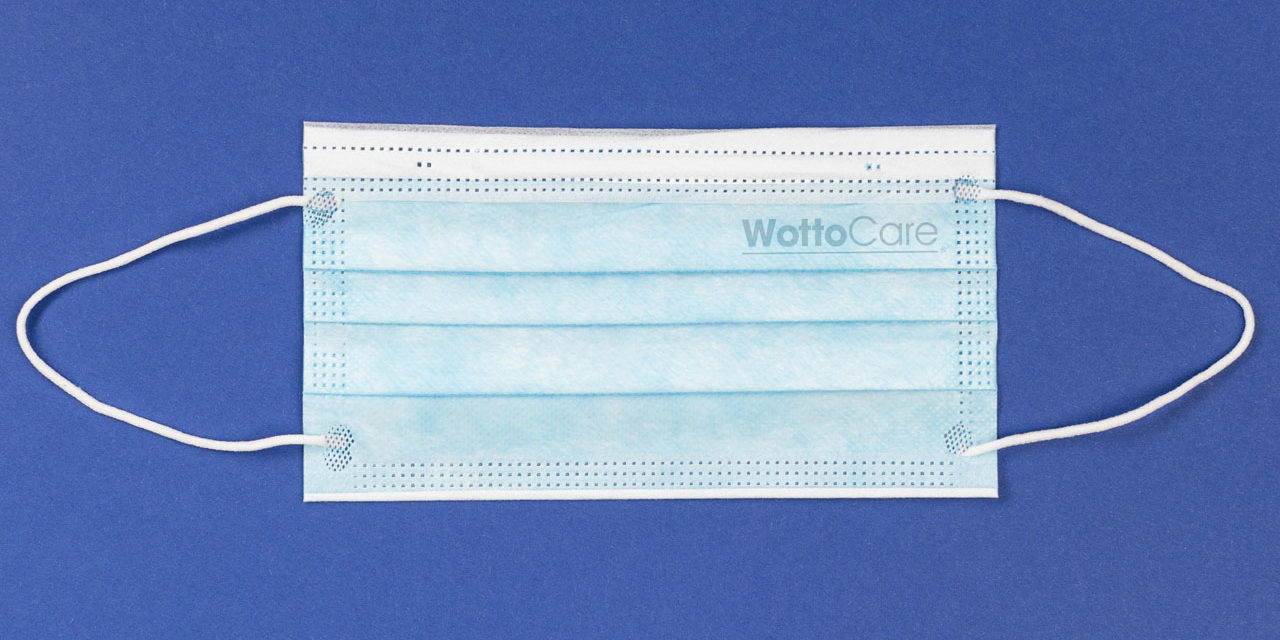Masks have become part of our daily lives since SARS-CoV-2 threatened the world population in early 2020. This pandemic, of unprecedented magnitudes since the Spanish Flu in 1918, has caused a boom in the offer of masks, available in a wide range of designs, materials and manufacturers. Which are the best masks for Covid-19?
Hygienic and Surgical Masks, best masks against Covid- 19
The Ministry of Health declared in its Order SND / 354/2020, published in the Spain’s Official State Gazette (BOE), that hygienic masks are essential to minimize the risk of spreading COVID-19 between people. Hygienic masks duly tested under the UNE EN 0064 specification in its sections 1 & 2 have shown to have high efficiency in the filtration of viral particles (since they share the critical breathability and bacterial filtration tests of the UNE EN standard for sanitary masks. 14683: 2019 + AC: 2019), these being the best option for the civilian population.
Hygienic mask
This material has been common among professionals in the food industry. The emergence of Covid-19, however, has made the hygienic mask one of the most used as a protection measure to stop its spread.
At first, hygienic masks lacked certification, not being catalogued, and standardized by the regulatory entities in Spain and the rest of Europe. However, the Ministry of Industry, Commerce and Tourism has promoted, through the Spanish Association for Standardization, a recommendation of minimum specifications to standardize and guarantee minimum quality requirements, which include critical tests such as breathability (differential pressure) and filtration of bacteria that provide adequate levels of protection to the population. This recommendation includes, among other points, some labelling requirements with relevant information on use, storage, disposal, (including cleaning and disinfection if applicable).
Hygienic masks are divided into two categories: those certified by the UNE 0065 standard, corresponding to reusable masks for adults and children, and the UNE0064-1 and 2, standard corresponding to non-reusable masks for the same population groups respectively.
Surgical Mask
This material was developed for the health field, although its use has been extended to the rest of the population during the health emergency. They act as a containment barrier for cough and saliva droplets secreted from the mouth and nose, especially when talking and sneezing.
The surgical mask provides adequate protection for the immediate environment of people who are potentially transmitters of the virus, such as healthcare personnel constantly exposed to contaminated environments and people diagnosed or with clear symptoms of being infected. This mask minimizes the chances of transmitting this virus since it filters to the outside, among others, possible drops of saliva through the air. There are three types of surgical mask: I, II and IIR, each of these recommended for different environments of exposure.
All of these masks are not reusable and should be discarded after the recommended period of use (4 continuous hours) or when they show signs of excessive humidity or deterioration from use.
Filtering masks (PPE category III).
For the German Federal Institute for Medicines and Medical Devices, only the FFP2 and FFP3 type masks have been shown to offer effective protection against Covid-19, as stated in a recent study. Hence, they are probably the best recommended masks to protect the user in today’s environment.
In Spain its use is recommended especially to professionals and vulnerable groups of people due to medical indications. However, the recommendations for use by the civilian population are always directed to hygienic masks.
However, the masks considered as Personal Protection Equipment FFP1, FFP2 and FFP3 continue to be marketed in pharmacies and specialized establishments available to consumers.
According to the Official State Gazette (BOE), at the beginning of the pandemic, exceptional measures were established in which alternative regulations (such as the Chinese standard GB 2626: 2006) to those approved under the European standard were considered. These were recognized as equipment that offered and ensured minimum protection requirements and that were authorized to be marketed (under analysis and powers of each autonomous community). This authorization was in force until September 30, however, it was extended according to the current context until December 31, 2020.
These masks are usually designed with layers of polyester fibers and other filter materials, so that they are resistant and meet the minimum requirements. These masks are divided into three groups: FFP1, FFP2, and FFP3. Unlike the hygienic and surgical ones, these offer protection to the user during inhalation, filtering the particles and expelling the CO2 from the exhalations. Its protection begins and ends, always in the user.
● FFP2 masks are more popular than FFP1 and FFP3. Its maximum leakage percentage into the interior is 8%, while its filtration reaches a minimum effectiveness of 92%. Reusable models show an ‘R’, while non-reusable models are marked with an ‘NR’.
● FFP1 masks have a maximum internal leakage percentage of 22%, with an effective filtration of 78%.
● FFP3 masks offer a maximum inward leak rate of 2%. They also surpass the previous ones in effectiveness in their minimum filtration, which reaches 98%.
